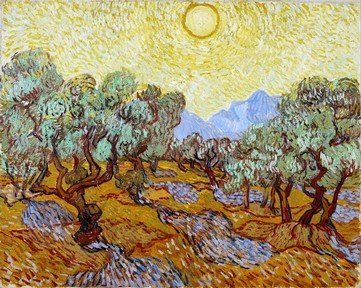Quiz Answer Key and Fun Facts
1. With an appropriate name for a "western" genre artist, which man was responsible for the 1908 work "The Grass Fire"?
2. Several paintings by German-born painter Friedrich Kuhnert depict animals retreating to safety before a veldt fire. What mighty African animals did he illustrate stampeding at least twice?
3. Tonja Opperman has over 20 years' experience fighting wildfires. What fitting medium does she use for her paintings of the subject?
4. What rural series was commenced by artist Vincent Van Gogh during the 1880s that is also the word missing from the following title of his, "____ Burning Weeds" (1883)?
5. Russian artist Alexey Kozmich Denisov-Uralsky's most famous painting was one of burning trees on the Ural Mountains entitled "Lesnoi pozhar". Keeping in mind the subject, what is its English title?
6. The focus of the painting "Fire's On", by Australian artist Arthur Streeton, is a raging bushfire.
7. "The Homestead Saved" is a painting by J A Turner depicting the frenetic activity of Victorian graziers as they seek to secure farm buildings in the midst of an inferno that became known by what name?
8. Mel Kishner and Luanne Harff-Burchinal both did paintings commemorating which wild fire that occurred some 100 years earlier and proved to be the deadliest wild fire in US history before the year 2000?
9. William Strutt is the artist who introduced bushfire painting in Australia. What was the name of his archetype work, which he painted in 1864?
10. In painting his 1893 masterpiece "The Scream", Edvard Munch was inspired by a "blood red sky" with clouds that hung like "blood and tongues of fire". A number of scholars have put forth that this skyline was created by the eruption of which volcano?
Source: Author
VegemiteKid
This quiz was reviewed by FunTrivia editor
looney_tunes before going online.
Any errors found in FunTrivia content are routinely corrected through our feedback system.
